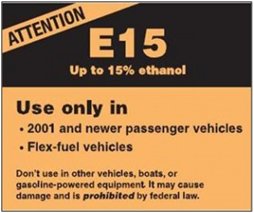This could be a pivotal moment in alternative fuel vehicle history, up there with the Prius coming to America in 2000, and the Leaf and Volt being launched in late 2010.
Volvo Trucks is commercializing dimethyl ether (DME)-powered heavy duty trucks in North America, and here are a few things you should know about it:
- It has the performance qualities and energy efficiency of diesel but can lower CO2 emissions by 95%. Let me say that again – 95%! Natural gas reduces greenhouse gas/C02 emissions 20% to 25% compared to diesel.
- It produces no soot, which is a commonly referenced downside of diesel (including clean diesel). Because it produces no soot, no diesel particulate filter is necessary.
- The fuel comes from a variety of domestic, sustainable sources such as biogas from food and animal waste, wasterwater treatment facilities, and landfills.
- The fuel can also be tapped and converted from North America’s vast supply of natural gas. This would address the distribution, storage, and fueling challenges faced by natural gas vehicles – dealing with what NGVs face and also contributing to solutions; along with benefiting from a domestic fuel source that doesn’t have to be imported from a hostile overseas market.
- The fuel is stored in lighter, simpler fuel tanks and lower psi systems than what’s needed for LNG and CNG systems. It’s similar to propane-powered vehicles in that regard.
- DME has been on the market for years as an aerosol propellant in cosmetics and other household products. It’s a clean, non-toxic fuel.
It’s part of Volvo’s “Blue Power” alternative fuel strategy, and has been through ongoing US customer field testing of trucks powered by DME. It was demonstrated to an audience after being announced recently in Sacramento at the California state capitol building. The DME technology will be available in a Volvo D13 engine, the top-selling heavy-duty engine in the world. While not specified in its announcement, it appears that this alternative fuel will operate directly in Volvo Trucks’ engines with only minor modifications for fuel tanks.
Blue Power was started in 2007 in Brussels when Volvo showcased seven commercial vehicles powered by seven different CO2-neutral fuels, one of which was DME. More recently, Oberon Fuels has developed small-scale production units that can cost-effectively convert biogas and natural gas into DME. The first of Oberon’s innovative production units will go online this month in California’s Imperial Valley region and is being tested with Safeway. Oberon’s small-scale production units enable the development of regional fuel markets that service local customers engaged in regional haul, initially bypassing the need for a national infrastructure, the company said on its website.
Volvo Trucks is still committed to CNG and LNG offerings as well – its lineup already includes CNG-powered Volvo VNM and VNL model daycabs. The company is also producing its own proprietary LNG engine in VNL daycabs and sleepers next year.
Will DME makes its way to light-duty passenger vehicles? Very good question. AB Volvo split between cars and heavy trucks in 1999 when Ford bought the car division. Chinese company Geely Automobile bought Volvo Cars from Ford in 2010. Perhaps Volvo Trucks and Volvo/Geely could work together on it? I would imagine it’s possible that the alternative fuel and its storage tank could be made ready to go into gasoline-burning engines, though that may take a while to be workable. The large fuel tank could be prohibitive for passenger cars and more applicable to trucks – which is the case for propane as well.
 The US Supreme Court has decided that it won’t be hearing appeals on a federal appellate court decision upholding the Environmental Protection Agency’s push toward having gasoline go from 10% ethanol blend to 15%. That isn’t going over too well with several automakers, fuel companies, and as few car buffs. The EPA stands behind E15, insisting its safe for cars model year 2001 and later. Chrysler hasn’t approved E15 on current vehicles, and other automakers are making decisions on whether E15 will void the warranty on the car. What’s coming next for E15?
The US Supreme Court has decided that it won’t be hearing appeals on a federal appellate court decision upholding the Environmental Protection Agency’s push toward having gasoline go from 10% ethanol blend to 15%. That isn’t going over too well with several automakers, fuel companies, and as few car buffs. The EPA stands behind E15, insisting its safe for cars model year 2001 and later. Chrysler hasn’t approved E15 on current vehicles, and other automakers are making decisions on whether E15 will void the warranty on the car. What’s coming next for E15?